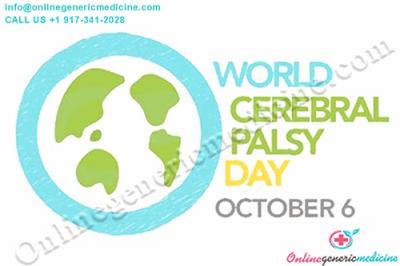World Cerebral Medication - From Onlinegenericmedicine.com

Medications to Treat Cerebral Palsy Symptoms
Medications can be used to treat symptoms of cerebral palsy (CP). As with many forms of drug therapy, a certain amount of experimentation may be required before optimal results are achieved.
Seizures—No single drug regulates all types of seizures, and no two patients respond identically to any given drug. Medications are prorated into first-generation anticonvulsants (older medications) and second-generation anticonvulsants (more recently developed).
Spasticity—The muscle relaxants may be prescribed to control muscle contraction (myoclonus). These drugs shorten spasticity for short periods, and their long-term value is uncertain. The long-term effect of these drugs on a child's growing nervous system is unknown.
Side effects of diazepam include drowsiness, slurred speech, constipation, nausea, and incontinence. Common after effects of dantrolene include drowsiness, dizziness, general weakness, and diarrhea.
The most common side effect of phenobarbitol is drowsiness. Other includes dizziness, slowed heart rate, confusion, constipation, and nausea. Phenobarbitol and the other barbiturates can become habit forming.
Baclofen is a muscle relaxant and antispastic medication that is accessible in tablet and injectable forms. Intrathecal baclofen uses a very small implanted pump to pass a steady supply of medication into the fluid around the spinal cord. Strict compliance with the restore schedule is imperative to avoid abrupt withdrawal and resulting severe complications, including death.
Side effects associated with baclofen include confusion, dizziness, drowsiness, headache, insomnia, nausea, hypotension (low blood pressure), and urinary frequency.
Anticholinergics can be prescribed to control the abnormal movements associated with athetoid cerebral palsy. These drugs hinder the effects of acetylcholine, a chemical in brain cells that triggers muscle contraction. The most commonly prescribed anticholinergic drugs are trihexyphenidyl (Artane), benztropine (Cogentin), and procyclidine hydrochloride (Kemadrin).
After effects associated with anticholinergic drugs include dry mouth, constipation, agitation, and painful urination (dysuria).
Botulinum toxin, or BOTOX Cosmetic, is injected directly into muscle. BOTOX Cosmetic blocks acetylcholine and alleviates muscle spasm for 3–6 months. Botulinum toxin may produce muscle weakness.
In some cases physicians may try to cud down spasticity or correct a developing contracture by injecting phenol into a muscle. This cripples the muscle and gives physicians and therapists a chance to stretch and lengthen the muscle with therapy, bracing, or casts. If the contracture is evaluated early enough, the need for surgery may be avoided.

